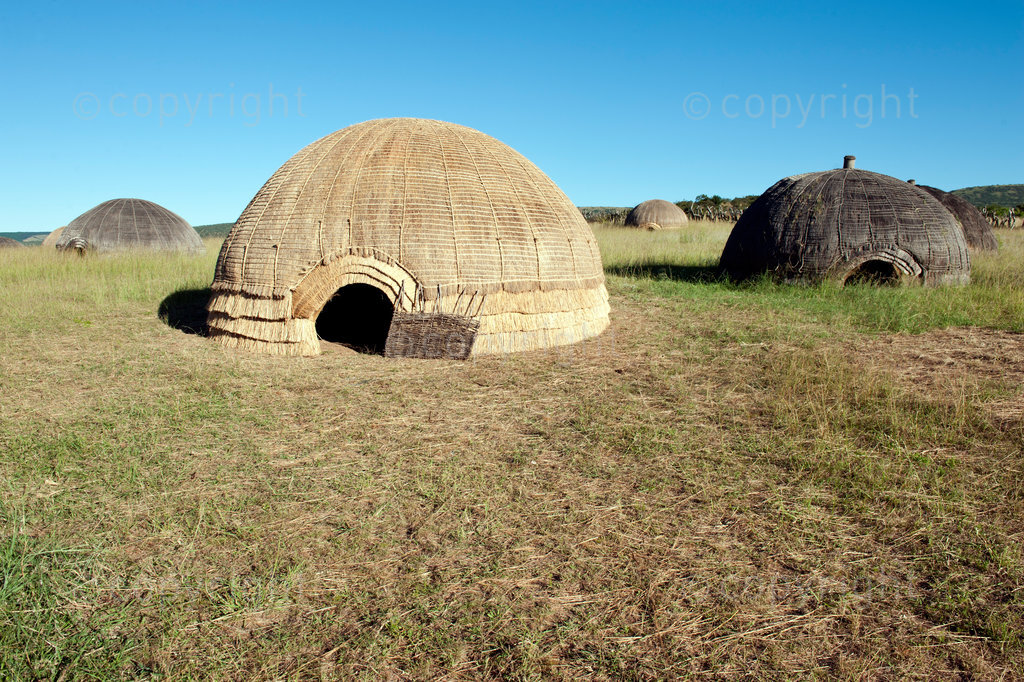
Image Number:
APN374425
APN374425
Headline: uMgungundlovu Description: uMgungundlovu was the royal capital of the Zulu king Dingane (1828–1840) and one of several military complexes (amakhanda) which he maintained. He established his royal kraal in 1829 in the Emakhosini Valley against Lion Hill, just south of the White Umfolozi River. The name uMgungundlovu stems from the Zulu word or phrase ungungu we ndlovu, which means "the secret conclave of the elephant". Some sources also refer to uMgungundlovu as "the place of the elephant". The word indlovu (elephant) refers to the king of the Zulu people. Dingane built his capital city of UmGungundlovu in 1829 and enlarged it five years later. UmGungundlovu was built according to the characteristic layout of a Zulu military settlement (singular: ikhanda, plural: amakhanda). The ikhanda consisted of a large, central circular parade ground (isibaya esikhulu), surrounded by warriors' barracks (uhlangoti) and storage huts for their shields. The isibaya was entered from the north. The royal enclosure (isigodlo) was situated on the southern side of the complex, directly opposite the main entrance. The king, his mistresses and female attendants (Dingane never married officially), a total of at least 500 people, resided here. The women were divided into two groups, namely the black isigodlo and the white isigodlo. The black isigodlo comprised about 100 privileged women, and within that group another elite called the bheje, a smaller number of girls, favoured by the king as his mistresses. A small settlement was built for them behind the main complex where they could enjoy some privacy. The remainder of the king's women were called the white isigodlo. These consisted mainly of girls presented to the king by his important subjects. He also selected other girls at the annual First fruit ceremony (umkhosi). A huge half-moon shaped area was included in the black isigodlo; here the women and the king sang and danced. The huts in the black isigodlo were divided into compartments of about three huts each, enclosed by a two-metre-high hedge of intertwined withes, which created a network of passages. The king's private hut (ilawu) was located in one such triangular compartment and had three or four entrances. His hut was very large and was kept very neat by attendants; it could easily accommodate 50 people. Modern archaeological excavations have revealed that the floor of this large hut was approximately 10 metres in diameter. Archaeologists found evidence inside the hut of 22 large supporting posts completely covered in glass beads.[3] These had been noted in historical accounts by Piet Retief, leader of the Voortrekkers, and the British missionaries Champion and Owen.On the south side, just behind the main complex, were three separate enclosed groups of huts. The centre group was used by the uBheje women of the black isigodlo. In this area, they initiated chosen young girls into the service of the king. Sublocation: uMgungundlovu City: Ulundi Province or State: kwaZulu-Natal Country: south Africa Date Created: 03-04-2012 Creator: Reinhardt Hartzenberg Credit Notice: Reinhardt Hartzenberg / The Media Bank / african.pictures Pixel Dimensions X: 5120 Pixel Dimensions Y: 3407 Keywords:- Reinhardt Hartzenberg
- uMgungundlovu
- zulu
- culture
- Ulundi
- king
- Dingane
- king Dingane
- military complexes
- military complex
- war
- Piet Retief
- Zulu people
- royal kraal
- traditional
- tourist attraction
- tourism
- outdoors
- zulu hut
- hut
- skraal
- africa
- home
- grass
- nature
- building
- tribal
- village
- countryside
- tribe
- shaka
- bush
- kwazulu-natal
- natal
- warrior
